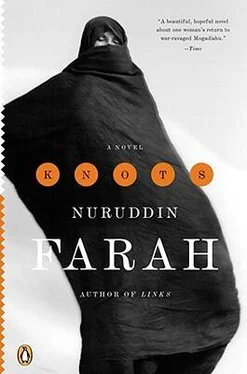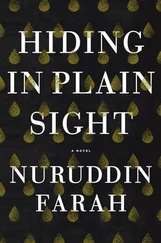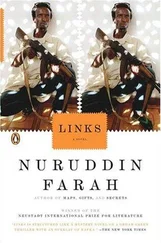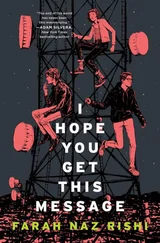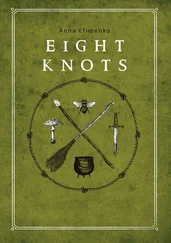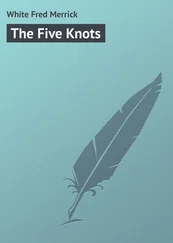There is impishness lighting Gacal’s eyes. Full of mischief, he turns to Cambara and for effect elongates his vowels. “See you laaaater, Aligaaator,” he says.
She is about to tell him off, at least remind him to behave, when Nuura drags him away, pulling him by the hand. Just before they disappear around a wall and then into the corridor, she follows them for a bit, then watches them, in silence, unable to decide whether to go after them and call him back or to let him be and wait for another opportunity. She settles on pleading with them and says, “Wait, wait, let me tell you what I think,” but they slink off speedily, and one of the girls closes the door from inside.
Turning, alone in the corridor, the two girls gone with Gacal in tow, Cambara finds herself overwhelmed by a sense of desperation, whereon she replays her first and so far only potential contretemps with Kiin, who was hesitant to allow Gacal to join them for lunch at her house and then watch Pinocchio with her daughters. It was in connection with this that Cambara had a judicious rethink, almost calling off her original idea that Gacal come with her or that he watch the film with her daughters. Now she attributes her earlier disquiet to the fact that she didn’t follow through with the suggestion that she take him back to the hotel for his lunch, not necessarily at the restaurant but maybe at the kitchen, like the other employees. After all, Sumaya, too eager and too quick, made a grab for the videocassette, snatching it away from him, and ran off with it, the others pursuing her as excited children often do. Maybe she was too slow in finding the appropriate words in which to divulge her revised agenda, which apparently presented itself as a new trajectory, by far wiser and less harmful to all concerned. Meanwhile, Sumaya, fast moving in her eagerness to watch the film, is off, half running, the others chasing and paying no heed to Cambara’s repeated appeals to wait and listen, as her only chance to present her new plan slips away.
She wonders if Gacal is a Lucignolo, similar in outlook and behavior to the character in Pinocchio —Lucignolo in the original Italian, Lampwick in the English translation — who is a Bad Bad Boy. She reminds herself that the book is about the misadventures of a handful of boys, some of whom are Good Bad Boys and some just too bad to be put back on the straight and narrow. Lucignolo is such a boy — bad, very bad. By her reckoning, Pinocchio, even though he is gullible, is at heart a Good Bad Boy. A pity she had not heard Gacal’s story or anything much about his beginnings, who his parents were and why he is where he is at present. If one is to assume that Gacal resembles Pinocchio in terms of personality and makeup more than SilkHair does, primarily because he strikes her as having had a middle-class background, then perhaps SilkHair, also unknown to her, is more like Lucignolo, given his current situation. It would be fun not only to get to know them better but also eventually to get them together. Of the two boys, which of them will be Lucifer, for that is presumably from where the name Lucignolo is derived, and which the star pupil, no longer a puppet whose strings are in the hands of someone who controls their actions.
Cambara’s immediate worry is of a different nature, though. It is about whether, left alone with the girls, Gacal may become a possible source of misbegotten schemes and likely to lead Sumaya and Nuura, who, insofar as it is conceivable to imagine, have up to now led highly protected lives, down a garden path. It is about whether she has compromised her prospective friendship with Kiin in such a way as to put it at some risk, endangering its potential growth to great heights. Maybe Kiin is more conscious of what is involved. This is understandable, given the circumstances.
Cambara recalls reading Pinocchio in the original as a child and enjoying it, even then getting a great deal out of it. More recently, she has had the opportunity to reacquaint herself with it, this time reading it in English to and/or with Dalmar. The book struck her then as a precursor of much of the literature about a hick from the sticks coming to the city and being duped by a slick con man. In her recent rereading and viewing of the Disney video, the thought occurred to her that Pinocchio is perhaps about small boys — the majority of them parentless and innocent — hoodwinked into joining armed militias as fighters and made to commit crimes in the name of ideals they do not fully comprehend or support. Boys having fun, even when killing.
As she walks back into the living room, rueful that she has not gone with her first instinct and dreading to think what Sumaya and Nuura, seeing the video in the company of Gacal, will make of it, she is of two minds whether to join them, if only to mediate a more enlightened interpretation to help them understand the story from her own perspective. In the end, however, she decides to wait for Kiin and see what her friend says.
Kiin breezes in, as fast as a whirlwind that has just sprung up and is rising. Cambara observes Kiin pausing, her right foot ahead of her left, her body tense and bent at the knees; she has the elegant poise of an athlete on her marks, a runner listening for “Ready,” then “Steady,” “Go,” and then finally the shot before sprinting off. Maybe she is going to take off her shoes first and then her various layers of clothing? For Kiin is wearing a khimaar , which covers her face, head, and hair, and a shukka , a button-down overcoat, neither of which Cambara remembers seeing her wearing on the previous occasions when the two of them have met. Cambara thinks that neither the face veil nor the shukka reflects Kiin’s character or her own idea of an athlete poised to take part in an athletic meet. What reason could there be for Kiin wearing these?
It is then that Kiin removes her khimaar and her shukka in a flash, as if on impulse, peeling off one, then the other, consciously ridding herself of an encumberance keeping her from accessing a more intimate aspect of her self. Maybe Kiin wants to believe that she is returning to the person she has been for much of her life: a Muslim woman and a Somali one at that. After all, her own kind have not been given, until recently, to the habit of putting on khimaar and shukka . Perhaps Kiin needs to deliver up the mode of dressing just to be comfortable outside; that’s all. Meanwhile, Cambara cannot help staring, following Kiin with her eyes, silently gawking, as if provoked into doing so. She ogles, enraptured. And Kiin, as if to make a point, is all there, standing tall and imposing in a see-through dress, no bra, her underclothing visible in all its bright patterns, the expanding girth of her abundance in a display of sorts, challenging Cambara to check her out. A simpler explanation is worth considering: that Kiin has come home after a hard day at work and is chilling out at home in a light skirt with a designer bodice. Nothing is wrong with that. Now she turns to Kiin, who is asking her a question.
“How have things been?”
“You have a beautiful home here,” Cambara says.
“The accursed veils,” Kiin mumbles in fury, as she gathers them from the couch, where she threw them earlier, and then folding them neatly and putting them out of her way as she decides whether to sit or remain standing. Cambara can hear Kiin uttering obscenities, concluding, “How annoying,” and she looks at the pile as if for the last time. “How cumbersome these veils are!”
Cambara empathizes with her friend’s sentiment, remembering how she has resorted to putting on the veil not only because it would draw away the unwanted attention of the armed youths but also because the idea of camouflaging oneself has its built-in attraction. She can’t remember where she has read or heard that Islam makes sex so exciting: all the veiling, all the hiding, all the seeking and searching for a momentary peek of that which is concealed; the gaze of the covered woman coy; her behavior come-hither coquettish. That you are discouraged from meeting a woman alone in a room unless she is your spouse or your sister — these things, while some people may think of them as impediments, reify the idea of sex, turning it into something hard to get and therefore worth pursuing. Cambara is about to put a question to Kiin when her friend speaks.
Читать дальше
